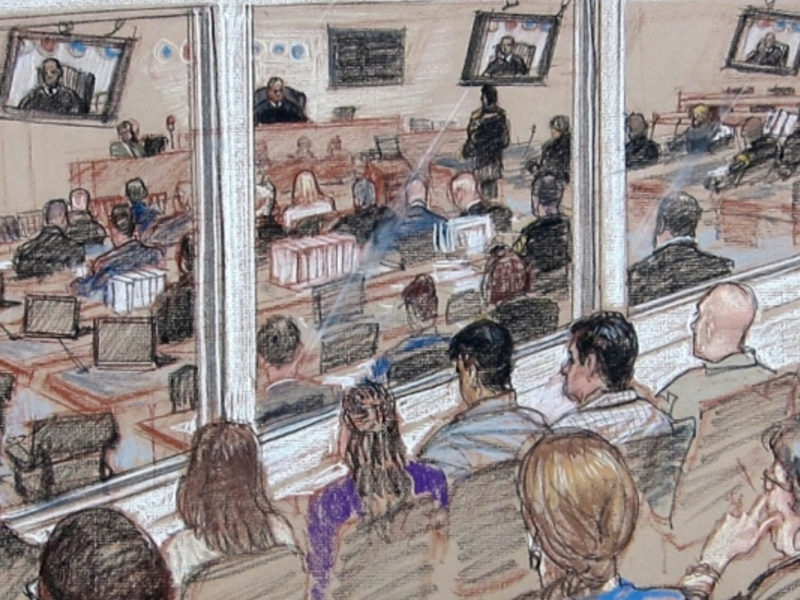
The first Lisbon Winter School for the Study of Communication took place from January 11-15, 2019 and was dedicated to the study of “Media and Populism.” The following is an overview of the inaugural program by Annenberg doctoral candidate Jennifer R. Henrichsen. PDF versions of keynote talks are available for download at the bottom of this page. The 2nd Lisbon Winter School, “Media and Uncertainty,” will take place January 7-11, 2020. For more information follow this link: https://www.lisbonwinterschool.com

The Emergence of Contemporary Populisms and Mediated Discourses: Jennifer R. Henrichsen
Populism is on the rise in numerous countries around the world. It has re-emerged in some countries and relied on existing power structures in others. Its visibility and representation has increased in some nations while swiftly and suddenly moving into the mainstream political environment in yet others. Populist discourse often involves a charismatic leader who is presented as an embodiment of the people’s will in contrast to elite or established institutions. Such a leader is also presented as the only individual who can solve seemingly intractable problems that affect “the people.” Although populist movements have myriad characteristics which differ from one another based on contexts and cultures, all forms of populism involve some aspect of mediated communication.
The media amplify and circulate messages which inspire particular affective responses among members of the population. Leaders utilize the media to create a shared community and an emotional bond between themselves and the people. The media have been co-opted to foster and perpetuate an “us versus them” discourse and hate speech against formulations of the “other” at various points throughout history. Technological mechanisms for such dissemination have evolved over time although the onus of keeping an “us versus them” formulation visible in the media has remained a priority for populist politicians.

In recent years, however, neo-populist contemporary movements have operated in a cultural environment saturated with populist media (Waisbord, 2003) and the emergence of rituals and practices that foster the prominence of populist discourses (Mazzoleni, 2003; Kramer, 2014). Thus, neo-populism and the media have a symbiotic relationship in part because coverage of politics follows an entertainment model based on shock-value, controversy and emotional rather than rational discourse.
Despite this synergistic relationship between populism and the media, journalists and other media practitioners are often vulnerable to threats and attacks by populist politicians who aim to use the media to extend their political power. As such, governmental actors attempt to reduce the autonomy and legitimacy of journalists when the press acts in critical and inconvenient ways.
Drawing from this context, in which both right and left-wing populist movements make savvy use of the media while attacking their existence and practices, speakers at the first Lisbon Winter School for the Study of Communication on Media and Populism in January 2019 focused on the role of the media in populist formations. Scholars examined how populists and media practitioners interact, how populism is represented in the media and how populists use media to connect with supporters and marginalize individuals voicing political discontent in various countries and across different time periods. The threat posed to freedom of information by populist movements is central, but it is part of a larger information ecosystem that raises critical questions about the capacity of the media writ large – journalism, documentary, entertainment, digital spaces – to wrestle with issues and problems that trouble the essence of populist appeal.
This book provides a response to this challenge through its curated collection of keynote speeches delivered at the inaugural Lisbon Winter School on Media and Populism, which was jointly organized by the Faculty of Human Sciences (Catholic University of Portugal), the Annenberg School for Communication (University of Pennsylvania), the Faculty of Communication Sciences (University of Tampere), and the School of Journalism and Communication (Chinese University of Hong Kong). The speeches transcribed for this collection aim to uncover what is familiar and distinctive about manifestations of populism around the globe by examining the phenomenon through a critical lens and across temporal and mnemonic landscapes.

In her chapter, “Entering the ‘Post-Shame Era’” Ruth Wodak traces the emergence of a post-shame era following the increase in populism, illiberal democracy and neo-authoritarianism in Europe. She argues that present-day society is living in a post-shame era characterized by anti-elitist rhetoric, symbolic politics, ‘digital demagogy’, ‘bad manners’ and anti-political sentiment. Populist politicians who have rejected liberal values of dialogue, agreed upon norms and established conventions associated with the European Union project have embraced these authoritarian characteristics and engaged in their “shameless normalization,” which is paving the way to illiberalism in previously strong democracies, including Austria, the United Kingdom, Italy and the Netherlands. Wodak calls on scholars and practitioners to develop new narratives, public spaces, communication modes and policies to ensure that the achievements of pluralistic and enlightenment liberal democracies are not shattered in this new era.
In contrast, in his essay “Idealizing History and Controlling the Media: Common Patterns in Populism and Authoritarianism,” Nelson Ribeiro examines the phenomenon of populism through the lens of Umberto Eco’s (1995) concept of “eternal fascism,” or the idea that fascism is a political game with numerous forms and is not a homogenous political doctrine. Through the case of the former Portuguese dictatorship, The New State, Ribeiro shows how contemporary populism, with its different democratic contexts and levels of repression, has similarities with authoritarian regimes during the interwar period and utilizes fascist elements to obtain and maintain power and control.
Meanwhile, Francis Lee takes us across the ocean to Hong Kong to assess how we should understand the relationship between populism, the media (especially digital and social media) and the dynamics of contentious politics. In his chapter, “Populisms, Media and the Dynamics of Contentious Politics,” Lee shows how inefficient governance and stagnant democratization led to contentious politics in Hong Kong, which, in turn, contributed to the rise of populist localism and state-sponsored populism since 2010. Lee argues that the development of these populist discourses is emblematic of a process of contesting and negotiating the repertoire of social movement discourses. He shows how social media are a contributory condition for the rise of populism and that social media become part of the dynamics of populism by contributing to populism’s scale and speed.
Rolien Hoyng also assesses the intersections of state power, populism and digital media but in the context of Turkey and through the lens of digital intimacy. In her article, “Digital Intimacy and its Metadata: Rethinking Populism,” Hoyng examines the relationship between the micropolitics of affect, state power and digital infrastructure. She assesses how digital intimacy reconfigures or displaces populism by examining the connectedness of human relations and the connectivity of algorithmic processing within social media. Using examples from social-media campaigns that occurred during regime change in Turkey as well as Turkey’s military mobilization in Syria and its deepening economic crisis, Hoyng challenges the notion that the crowd is homogenous and scary because it undermines the notion of liberal and “rational” subjectivity. Instead, she argues that the crowd is dangerous as a result of its disconnections and erasures which are facilitated through digital media. Thus, she claims it is important to question in what ways and to what extent affect and intimacy are technologically captured, exploited and articulated into projects of authoritarianism and othering.
In her essay, “Media and the Emotional Politics of Populism,” Karin Wahl-Jorgensen uses the case study of Donald Trump to examine the relationship between anger, populist politics and media coverage. Wahl-Jorgensen argues that Trump embodies “angry populism” or a rhetoric which aims for broad appeal through the strategic and deliberate expression of anger. This form of populism represents a shift in William Reddy’s (2001) concept of an “emotional regime” or a “set of normative emotions, and the official rituals, practices and emotives (emotion words) that express and inculcate them” which are perceived as essential for any stable political regime. Wahl-Jorgensen observes that anger works for Trump and appears to be a resource for populist politics more generally. Anger also has a home with Trump’s supporters. This unspecified anger of Trump’s supporters, as shown through mediated discourse, suggests that anger is essential to their identity and worldviews and it reveals that Trump embodies a particular brand of exclusionary populism that depends upon performative anger in order to dramatize grievances. As such, Trump’s anger has provided an important mode of understanding his presidency and brand of populism. Wahl-Jorgensen argues that the emotional regime of angry populism is concerning because of the anger it embodies, the emotional climate it creates and the actions (such as hate crimes) that it facilitates. Thus, mediated anger in political life is a distinctive formation. Yet it can continue to be contested as collective and political emotions are dynamic and ever-changing.
Meanwhile, Sarah Banet-Weiser shifts the conversation from angry populism to anger toward women as emblematized by a rise in popular misogyny. In her chapter, “Popular Feminism and Popular Misogyny,” she examines how and in what ways the rise of popular feminism has invited a response and an intensification of popular misogyny, or the idea that women have taken something essential and important away from men and thus that men are the real victims. Banet-Weiser argues that popular feminism is characterized by confidence, competence, rage and shame, characteristics which are then taken up and distorted by misogynists who actively target women with them. Popular misogyny can be considered a type of populism because it mobilizes a particular kind of networked movement and it is about a shared sense of victimhood and a desire and a perceived right to take things back. Both popular feminism and popular misogyny are popular because they manifest in discourses and practices that are circulated in popular and commercial media, they have a condition of being liked or admired by like-minded people, and the popular, following Stuart Hall, is a terrain of struggle where competing demands for power battle one another. Banet-Weiser argues that popular misogyny is deeply connected with neoliberalism which operates as a structuring force that is both popular and networked and thus produces a populism that finds coherence and a shared sense of victimhood and which aims to recuperate and restore norms of dominant masculinity, patriarchy and whiteness.
In their keynote speeches which concluded the Winter School, Barbie Zelizer and Silvio Waisbord took a critical look at contemporary journalism and media practice and offered ways to improve on both in the future. In her essay, “Why Journalism Needs to Change,” Barbie Zelizer draws from Federico Finchelstein to argue that contemporary populism developed in the absence of fascist movements following WWII and amidst the emergence of a bipolar world which pitted capitalism against communism and the west against the east. In this black and white world, populism percolated and morphed into whatever was necessary to fill the in-between space. Populism also took on the colors of fascism to an extent to make democracy more authoritarian. The ensuing form of democracy thus depended on a charismatic leader, an apocalyptic view of the future, anti-elitism and anti-institutionalism, and an anti-pluralist view of popular representation. Populism thus became a counterpoint to liberalism, the Enlightenment and an undercurrent of Cold War thinking.
The resultant contemporary authoritarian populism impacts and shapes democratic institutions, including journalism. Yet, rather than respond to populism by critically dissecting it, many journalists and journalisms have facilitated the conditions necessary for populism to flourish. This has occurred for a variety of reasons including journalism’s entrenchment in a Cold War mindset, which has informed its binary thinking, its compliance and deference to the status quo, tendency toward simplification and its adherence to long-standing conventions of objectivity, neutrality, impartiality and balance. Zelizer argues that journalists need to find and adopt a less reactive, defensive, deferent, dichotomized, objective and impartial stance to more critically, thoroughly and effectively cover the rise of contemporary authoritarian populism. However, journalists by and large are not yet doing so. Instead, they continue to resist change and their non-reflective mindset continues to entrench and naturalize a non-critical and compliant response to authoritarian power dynamics that prevents journalists from being able to contest contemporary authoritarian trends. Zelizer calls on journalists to better understand how authoritarianism is invading the institutional landscape rather than shrinking from challenging it because they are worried about reduced access to sources, criticism from powerful figures, or because it may not contribute to the bottom line. According to Zelizer, journalists’ “deep memory of Cold War mindedness” may help ease occupational dissonance but it also results in a blindness to ideological inconsistences and an inability to see the dissolution of tenets of liberal democracies.
Similarly, Silvio Waisbord argues for changes in the media landscape and in the academic environment. In his essay, “Ideas for Comparative Studies of Populism, Media and Communication,” Waisbord calls on academics to not only focus on the causes of populism but to figure out ways for societies to emerge from populist environments. Waisbord argues that this is best achieved through a rigorous comparative approach that examines the relationship between media and populism. Waisbord acknowledges that populism is difficult to define because it has amorphous conditions and characteristics, yet he notes that a consistent tenet of populism is that it pits one group against another (even though these groups may change). Such an oppositional approach can swiftly devolve into treatment of the other as an enemy, which harkens and implicates authoritarianism. Thus, Waisbord argues that populism sits at the edge of democracy because it refuses to recognize diversity and can quickly devolve into antiliberal democracy which has no patience for critical thinking, critical journalism, or critical opposition.
The essays in this volume traverse complicated manifestations of populism and the media, as they are inflected by different democratic and historical contexts. They reveal the ways in which populism simultaneously relies on and strives to undermine the media and populism’s continued power to divide and demonize people into “us versus them” categories. The authors underscore the complexity of populisms and the mediated discourses associated with them and they also point to the need for urgent and in-depth understandings of the phenomenon as it rises in power and frequency across many countries around the world. Their calls for urgent changes in journalistic practice and academic focus are important to heed if citizens want to help ensure that liberal democracies survive in these increasingly populist and authoritarian times.
References
Krämer, B. (2014). Media Populism: A Conceptual Clarification and Some Theses on Its Effects. Communication Theory, 24 (1), 42-60.
Mazzoleni, G. (2003). The Media and Neo-populism: A Contemporary Comparative Analysis. Westport, CT: Praeger.
Waisbord, S. (2003). Media Populism: Neo-Populism in Latin America. In G. Mazzoleni, J. Stewart, & B. Horsfield (Eds.). The Media and Neo-populism: A Contemporary Comparative Analysis (pp. 198-216). Westport, CT: Praeger.

TRANSCRIPTS
Sarah Banet-Weiser: Popular Feminism and Popular Misogyny
Rolien Hoyng: Digital Intimacy and its Metadata: Rethinking Populism
Francis Lee: Populism, Media, and the Dynamics of Contentious Politics
Neson Ribeiro: Idealizing History and Controlling the Media
Karin Wahl-Jorgensen: Media and the Emotional Politics of Populism
Silvio Waisbord: Ideas for Comparative Studies of Populism, Media and Communication
Ruth Wodak: Entering the “Post-Shame Era”
Barbie Zelizer: Why Journalism Needs to Change


